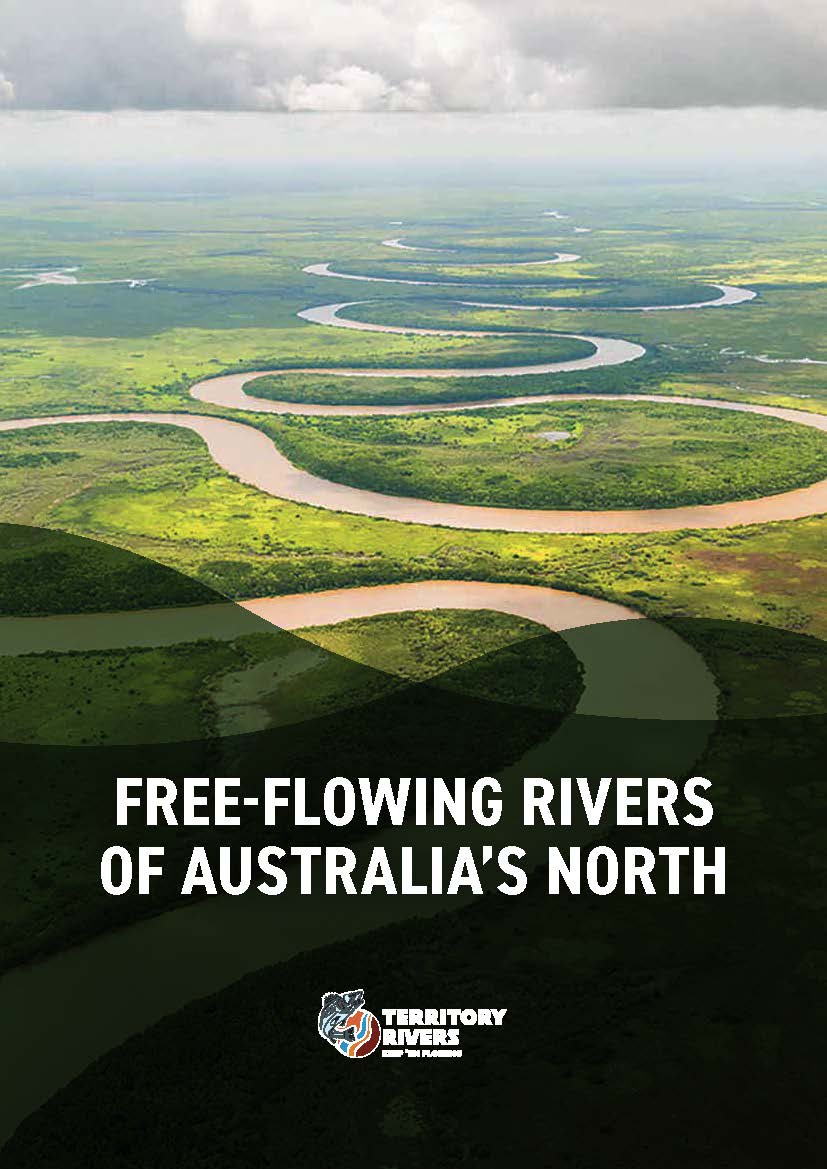Free-flowing rivers of Australia’s North
In Australia’s North, rivers are mostly still free-flowing and healthy. This feature alone makes them of global significance – a sad reflection on the poor state of many of the world’s rivers, including in Australia. Globally, some 2.8 million dams now impede rivers; nearly 70% of wetlands have been destroyed since 1900; and monitored populations of fishes, turtles and other freshwater vertebrates have declined on average by more than 80% since 1970. The rivers of the North are of standout significance for many other reasons as well – their diversity of species, the strongholds they provide for species in decline elsewhere, the exhilarating abundance of wildlife and their cultural significance for the people who have lived there for tens of thousands of years.
Australians should deliberate very carefully over the future of these rivers – for they have enormous value in their current form for people and nature. The nation has already paid dearly for the over-exploitation and degradation of many southern rivers, particularly in the Murray–Darling Basin, where rivers have been regulated and exploited with little consideration of whether this would genuinely benefit communities and be safe for nature.
This report aims to provide the people of the North, as well as decision-makers and influencers, with information, case studies and perspectives to help rethink policies and processes for deciding the future of the northern rivers.
Decisions are proceeding in the North unguided by any long-term vision for the future of the rivers and catchments, uninformed by a comprehensive consideration of the environmental, social and economic consequences of irrigation developments, and often without the meaningful involvement of communities in decision-making. Traditional Owners continue to be sidelined in decisions about the rivers they have managed for 50,000 years, or more, and that remain vital to their cultural and economic wellbeing.
Read the recommendations from the report:
- Develop laws and policies to protect high-value rivers and associated habitats (wetlands, floodplains and aquifers)
- As specified in the National Water Initiative, develop laws and policies to identify ‘surface and groundwater systems of high conservation value’ and ‘protect and enhance those values’. To herald a commitment to river conservation, identify the highest priority unprotected rivers for protection as a key focus of the renewed National Water Initiative.
- Strengthen protection of cultural heritage and facilitate Traditional Owner management
- In laws and policies to reflect the hybrid cultures of river management, articulate the perceptions and values of rivers in Indigenous terms; strictly protect cultural heritage as identified by Traditional Owners; and support Traditional Owners to sustain their cultural connections and exercise their custodial responsibilities for managing river systems.
- Strengthen water allocation processes to achieve more sustainable development
- Where river systems are not wholly protected, strengthen laws to optimise the sustainability of any water-focused developments, including requirements for transparent water planning, assessments of cumulative catchment impacts and allocations of cultural flows in addition to environmental flows.
- Enact UNDRIP and NWI governance principles
- Strengthen governance by enacting relevant principles under the United Nations Declaration on the Rights of Indigenous Peoples (UNDRIP) and the National Water Initiative Agreement (NWI). This includes UNDRIP Article 32.2 requiring the free and informed consent of Indigenous peoples before the approval of projects affecting their lands or territories and other resources. Relevant NWI provisions include requirements for statutory water planning. Other elements of sound governance include respecting Traditional Owner ways of perceiving and relating to rivers, and optimising transparency, accountability, community engagement and evidence-based decision-making.
- Review the White Paper and associated policies and programs
- As part of the proposed ‘refresh’ of the White Paper on Developing Northern Australia, commission an expert review and consult with stakeholders, the public and experts to determine how best to support genuinely sustainable development in the North that is aligned with the aspirations, cultures and skills of Traditional Owners and other northern residents and with broader government commitments such as Nature Positive, meeting climate targets, Closing the Gap and protecting cultural heritage.
- Invest in evidence-based and co-designed development pathways
- Refocus public investment on development opportunities that are aligned with the long-expressed aspirations of people who live in the North and consistent with sustaining and restoring the cultural and environmental values. With Traditional Owners, codesign opportunities that help achieve the goals of strategies such as Closing the Gap.

